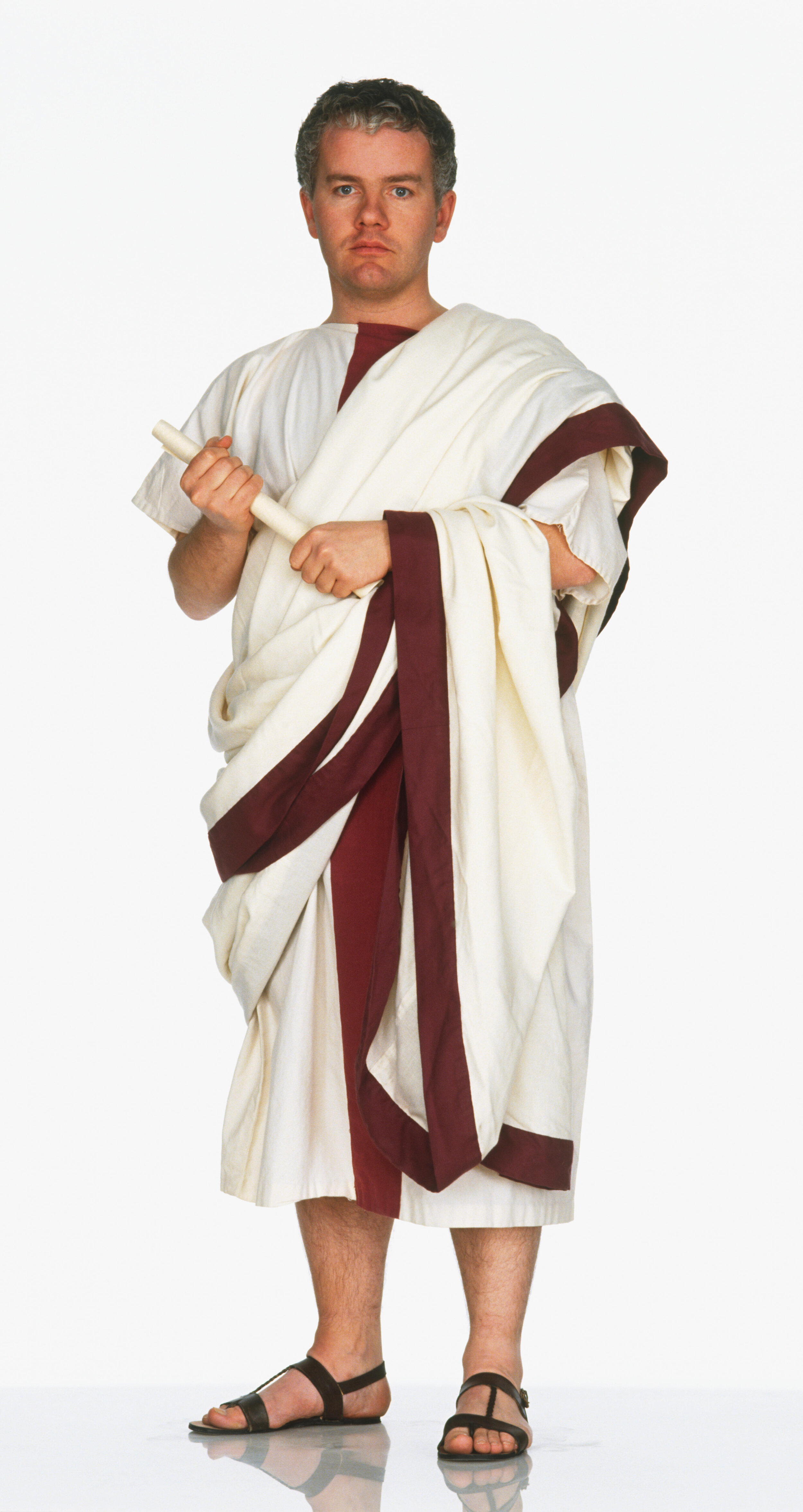Wearing Purple
Do you want to have the latest style of tennis shoe, even though it might be very expensive? Or do you want to wear clothing in the latest color?
The ancient Romans were no different than you! For them, clothing style and color meant power. You could instantly tell if a person held a certain office (such as a mayor today or a senator or president) simply by the color of toga that they wore. Can you imagine wearing a piece of clothing with a color that cost thousands and thousands of dollars to make?
Purple was a color that instantly screamed money and power in the Roman world.
Before we talk about expensive colors, let’s start with some basic knowledge. The basic outfit worn by every man was called a toga. A toga is a long piece of cloth that is wrapped around the body. The toga that was worn by the ordinary person was made of white wool.
Tiberius, Louvre. Wikipedia
How to put on a toga
A person, such as a mayor that we mentioned earlier, would wear a toga that had a purple stripe at the bottom. Here is a man who might have been elected as a senator or a mayor. Can you see the purple stripe on his toga? The cost of a purple stripe on a toga might be as much as the cost of a car today!
The reason that purple dye cost a lot of money to make was because it came from tiny shells. These shells were called Murex shells and were found in the Mediterranean.
Wikipedia.
To create a dye from Murex, thousands of shells had to be crushed and a tiny gland removed that was dried and ground to create a small bit of powder.
If you want to learn more about how to make purple color from shells, check out this website: https://www.middleeasteye.net/discover/colour-purple-dyeing-techniques-phoenician-sea-snails
Tom Westcott.
Because purple was such a valuable color, much money could be made by gathering the shells, making the dye, and selling it. A culture called the Phoenicians became famous for their trade in purple dye and fabric. Here is a picture of one of their sailing ships. These ships made journeys all around the Mediterranean and up to France and England carrying expensive luxury goods. Some people like to think of these ships as the large freight trucks that you see today on freeways, hauling goods across the country.
There was only one person in ancient Rome who could wear an entire outfit made of purple cloth. That was the emperor! The emperor was also called Caesar and was as powerful as a president or a king or queen. If you can imagine that a white toga with a purple band might have cost as much as a car, think of how much an entire toga must have cost. Perhaps it was as much as a big house!
We know that some Caesars wore purple togas that had fancy designs stitched with gold metal thread. The cost for such a toga must have been incredible!
Here’s a picture of the purple fabric, embroidered with gold thread, that was worn by a famous emperor who lived after the end of the Roman Empire. His name was Charlemagne and he ruled much of Europe. Its quite beautiful, even today.
Cloak of Charlemagne. Musée National du Moyen Âge, Paris
Today, purple dye is usually made from artificial ingredients that come from oil. Its much cheaper to make and anyone can wear the color purple. However, it is still possible to buy a purple dye made from shells. It is still made by a very few people and its still as expensive and difficult to make today.
Next time, you see a person wearing a purple color, or you buy an outfit made of purple, think about how, once upon a time, only kings and Caesars wore purple!
Here is a coloring sheet for you showing clothing worn in ancient Rome around the year 100 CE. If you want, you can make a purple band around the hem of the men’s toga or color the entire toga purple! You can also color the women’s dress purple.








